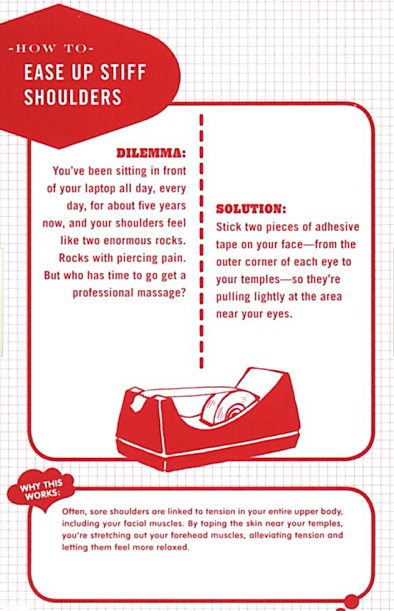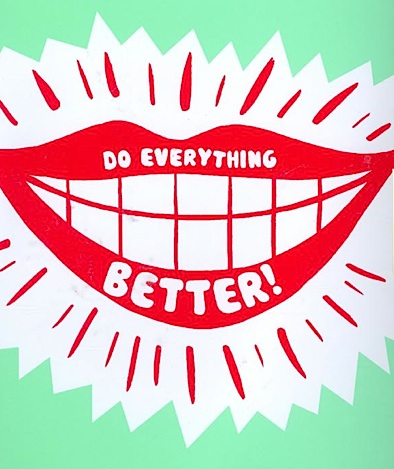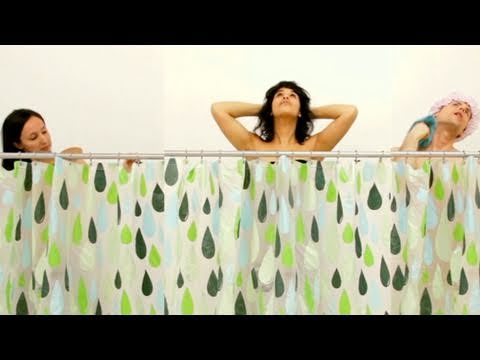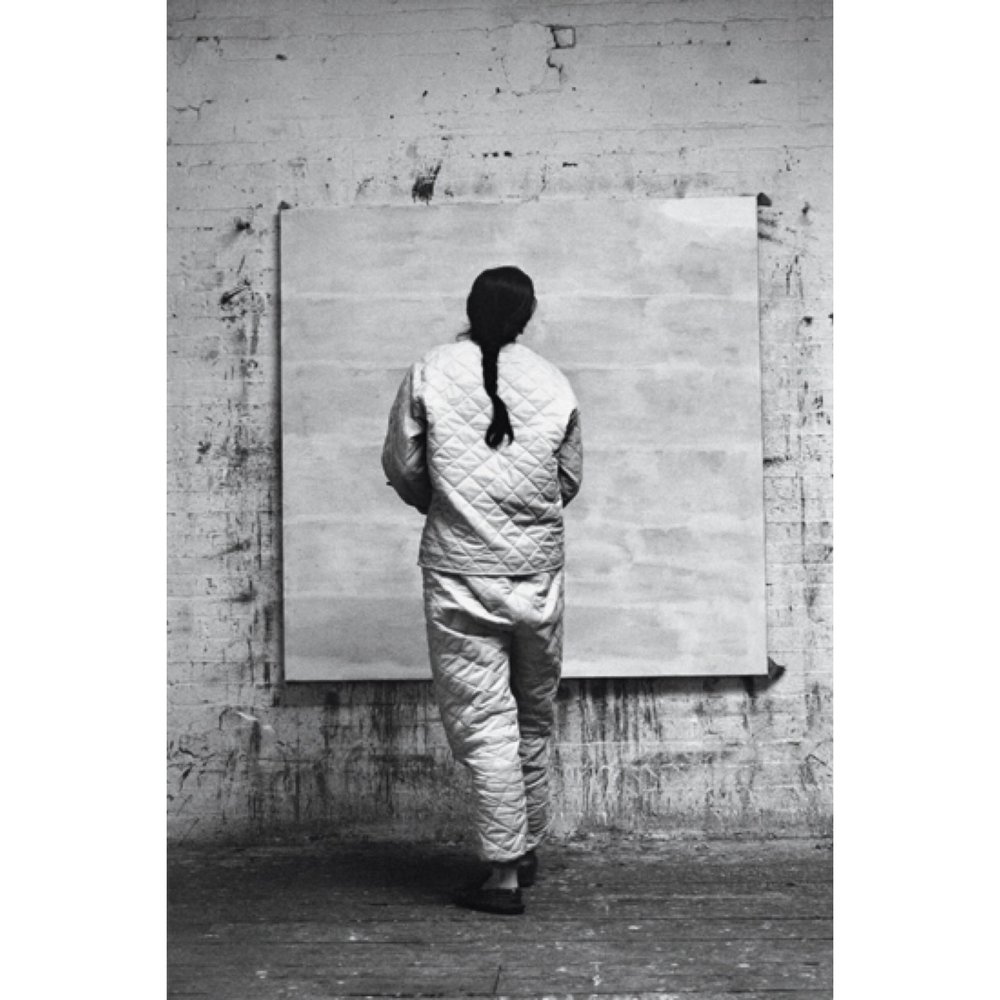Urawaza means “secret tricks” or “unmapped short-cuts” in Japanese. These are innovations and solutions to life’s little problems that humble people figure out for themselves, like How to Give Yourself a Steam Facial in the Tub (sit in the tub with an umbrella open over your head)…or How to Soothe an Itchy Mosquito Bite (put a piece of adhesive tape on it). I learned about urawaza from a charming book I stumbled on called Urawaza: Secret Everyday Tips and Tricks from Japanby Lisa Katayama.
It lists loads of urawaza, like How to Tell Which Direction You’re Going In, and How to Restore A Shrunken Sweater to It’s Original Size, along with the reason why it works. But my favorite part of the book is a chapter called “How to Discover Your Own Urawaza”, a step-by-step guide that really describes the process – and mindset – of improvising. Here’s a really condensed version:
1) Consider a lingering dilemma you just haven’t been able to figure out how to solve…
2) Find potentially useful objects…Try to look at objects and materials for what they are, what they are made of, and what their nature is rather than what they were originally intended to do…
3) Consider the different ways you can use these objects…
4) Experiment by putting the promising candidates to work…
5) Record your results…more often than not, you will have discovered by the end of your experimentation that something came out of it – if only a clear path for what to try next…
6) Share your urawaza…they are intended to make life better for everyone…

Apparently, they’re so crazy for Urawaza in Japan that there is even a popular reality show on the theme called Ito-ke no Shokutaku (The Ito Family Dinner Table) which features enactments of viewer-generated ideas on how to use daily objects in the most unlikely way. It’s a goofy, raucous show with amazingly good urawaza (you can watch a clip, below). There are websites and chatrooms and social networking communities devoted to urawaza.
Katayama explains that the although concept of urawaza had always been part of Japanese culture, it really took off after World War II:
“…many of Japan’s major cities had been destroyed, and the country’s resources had been exhausted. Basic provisions like food and cleaning supplies were hard to come by…All over the country, in many ways, people were trying to discover how to do more with less.”
As she says: “…there’s something oddly satisfying and fun about being resourceful and discovering new adaptabilities to everyday challenges.”
What urawaza have you come up with AND most importantly, how did you figure it out?





I love this idea! Thank you for posting. Now to go off and ruminate on urawaza for my entire life…
Priceless information for people like me.
What an awesome concept.
Here’s something I did recently that I’d consider urawaza:
One morning I decided that I wanted a cork board but I didn’t want to buy one. I remembered that we had some left over cork shelf lining from when we redid our kitchen a couple of years back (I have a hard time throwing stuff like that away!). So I grabbed the liner and looked around my collection of repurposable things. I found a shoe box and a padded envelope. I unfolded the box and carefully tore open the envelope. I glued the envelope to the shoe box. Then I peeled the shelf liner backing away and stuck it on (it just happened to be the perfect size). I made a border out of the remaining scraps of shelf liner, et voila! A cork board was born in less than an hour, from stuff I had lying around.
I’d love to get a copy of that book and incorporate more urawaza into my life!
Love this post!…simple ingenuity always makes me happy. We can do anything without a lot of trouble if you just think about if for a while. Great stuff and a great blog in which to share these things! Thank you!
Total urawaza! Thank you so much. The thing I love most is the idea of “looking at objects and materials for what they are, what they are made of, and WHAT THEIR NATURE IS rather than what they were originally intended to do”…Which you did exactly. It’s both satisfying and somehow really liberating.